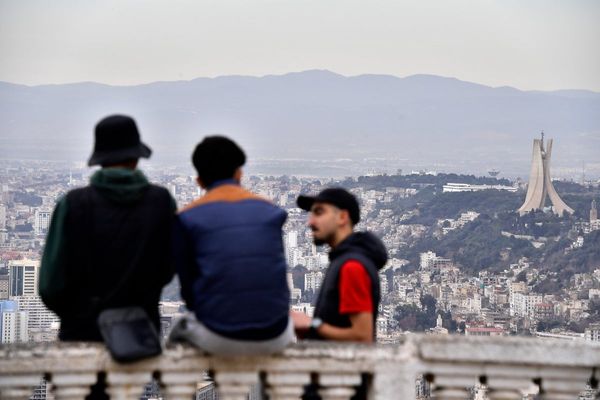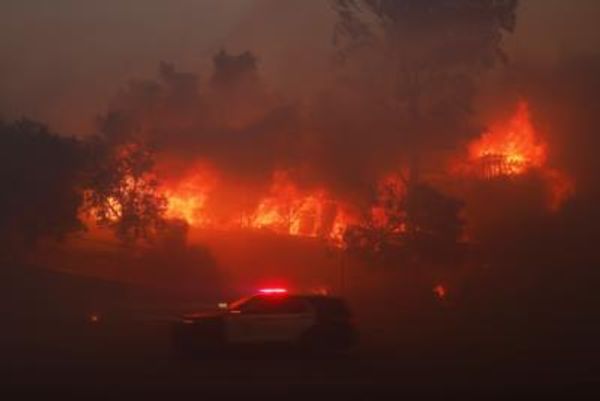As a child, Mark Koolmatrie was repeatedly warned of the Mulyawonk, a mythical creature that lurked in the waters waiting to catch you if you did the wrong thing.
"We learnt not to going swimming by yourself or to go out too deep in the water," Mr Koolmatrie says.
His heritage is the Ramindjeri and Warki clans of the Ngarrindjeri nation in South Australia, which includes the Eastern Fleurieu Peninsula with waterways flowing down into the lower Murray lakes and Coorong.
The Ngarrindjeri say you could also get caught by the Mulyawonk – some know it as the bunyip – if you took more fish than you needed.
"We were taught to preserve the environment so the Mulyawonk stays healthy," Mr Koolmatrie says.
"The Mulyawonk story has been told to us forever."
But as he grew up, Mr Koolmatrie realised many more stories from the past — about how to survive in the bush and how to care for country — had been forgotten since his people had been removed from their land, culture and language.
"Our identity as a people was being watered down continuously," Mr Koolmatrie says.
Today, Mr Koolmatrie is leading a push for Ngarrindjeri people to "re-learn and share" traditional knowledge about their lands for everyone's benefit.
"We're now embracing and celebrating that identity," says Mr Koolmatrie, who is chairman of the South Australian Aboriginal Heritage Committee and runs walking on country tours.
Most recently he's been working with a group including elders and scientists to document Indigenous knowledge and values for the Fleurieu Peninsula swamps at Yundi, about 40 kilometres south of Adelaide.
Wetlands significant for both culture and biodiversity
The highland swamps of the Fleurieu Peninsula are recognised nationally as being critically endangered habitats with high biodiversity, but less than 4 per cent remain.
Agricultural development, drainage and grazing has fragmented them and they are now in dire need of conservation — something that Mr Koolmatrie believes his project can help towards.
These swamps were traditionally a source of fresh water in dry seasons.
And they were a nice cool place for clans of the Ngarrindjeri to meet in spring and summer, to celebrate and share in the bounty that grew there in these warmer seasons.
"During winter it's too wet and you can't get into the area, it's too cold," Mr Koolmatrie says.
"But during spring and summer, a lot of the materials were shared and ceremony was done."
The swamp and surrounding woodland provided ample food such as meat from birds, snake-necked turtles and water rats, and eggs from ducks and swans.
Fish, yabbies and native orchid tubers, as well as gum and seeds from the swamp wattle (Wirilda), were also available.
And bush medicine plants could help relieve fever, headache, skin sores, aching limbs and digestive problems.
The swamps were also flush with rushes, reeds and sedges that could be used to weave baskets or plait rope, trees that made good spear shafts, and stones that made good sharp-edged tools.
"There was no Bunnings, there was no Mitre 10," Mr Koolmatrie says.
And the nearby mountains would have made a perfect point to meet up with neighbouring groups and survey one's country.
"Our people would have gone up there, sat up there and had ceremony, and from that high point you're able to see your country — you're able to see the Coorong and the Lower Lakes."
Relearning traditional knowledge through partnerships
Located south-east of McLaren Vale near Mount Compass, the Yundi Nature Conservancy is home to five hectares of precious Fleurieu Peninsula swamp that is still in reasonable condition.
Mr Koolmatrie partnered with property owner John Fargher, who has a background in agricultural science and natural resource management, to document the swamp there with funding provided by the Hills and Fleurieu Landscape Board.
Together, they organised field days where Ngarrindjeri elders and others, including scientists such as Leon Dodd, shared their knowledge.
Mr Dodd, an environmental scientist and Ngarrindjeri man, volunteered his time to record features of swamp plants important to his people.
Nita McAdam, a Warki/Ramindjeri elder, shared stories of water spirits, including the Mulyawonk.
Another mythical creature is the Kintji or ''little men'', who loved hunting for ducks and swan eggs.
The Ngarrindjeri believe it's important to share resources with the Kintji, lest you get caught out.
"So, for example, you don't take all the swan eggs out of the nest," says Mr Koolmatrie, who adds it's all about ensuring there are enough swans for the future.
In this way, mythical creatures had a value in the way swamps were looked after, he says.
The field days also drew on the work of anthropologist and ethnobotanist Philip Clarke.
Forty years ago, Dr Clarke interviewed elders going back three generations, including Mr Kootmatrie's relatives, about their knowledge of the land.
Over the years Dr Clarke published countless papers on plant foods, seasonal activity of Aboriginal people and their beliefs about spirit beings, including the Mulyawonk.
"Children were told if they got too close to the water's edge, Mulyawonk would drag you in," he says.
"There's a story about an early paddleboat steamer captain [who] shot at one and he died a horrible death — there was a bit of a moral in that story not to harm them."
Dr Clarke, who is now a native title consultant, says he contributed to the Fleurieu swamp project as a way of returning the outcomes of his research to the Indigenous people he had worked with in the past.
When Dr Clarke's research was presented at the field days, it triggered memories in the current generation of Ngarrindjeri elders, Mr Fargher says.
Mr Koolmatrie says sharing the material collected by Dr Clarke has been really exciting.
"When we're hearing the stories ... it's like the old people are talking directly to us," he says.
"It's a whole learning and relearning experience that our people are going through right now."
Two-way learning
Mr Fargher says being part of the project has taught him a different way of seeing things.
"It was a revelation for me to discover that in Aboriginal thinking, it's not just plants and animals that form the ecosystem, it's also mythological creatures and spirits.
"And it's a compelling part of the story."
As for Mr Koolmatrie, he's keen to take the learning from Yundi to other properties and wants to create a seed bank that will see Aboriginal people, especially the younger generation, involved in restoration of traditional lands.
This could include planting species that are now endangered, like the beautiful leek orchid or the guinea flower.
"We have an aim of re-wilding the whole Fleurieu Peninsula. It's a long-term aim," he says.
"It may not happen in my lifetime. However, if we plant the seed, we hope that more people come back to nature.







